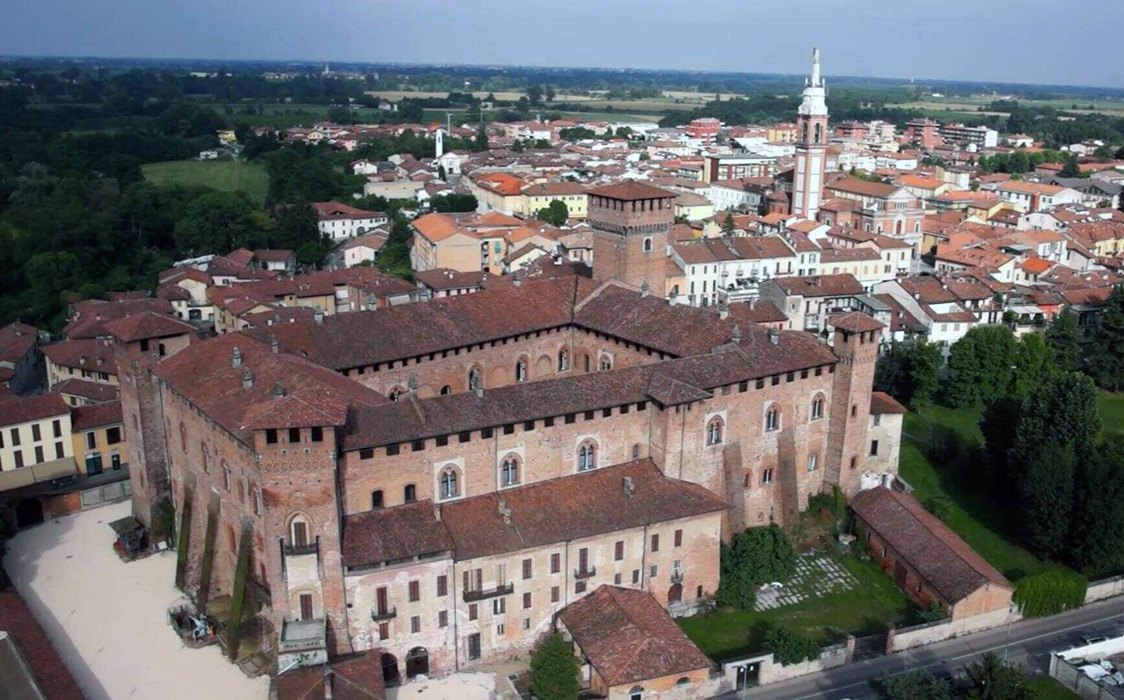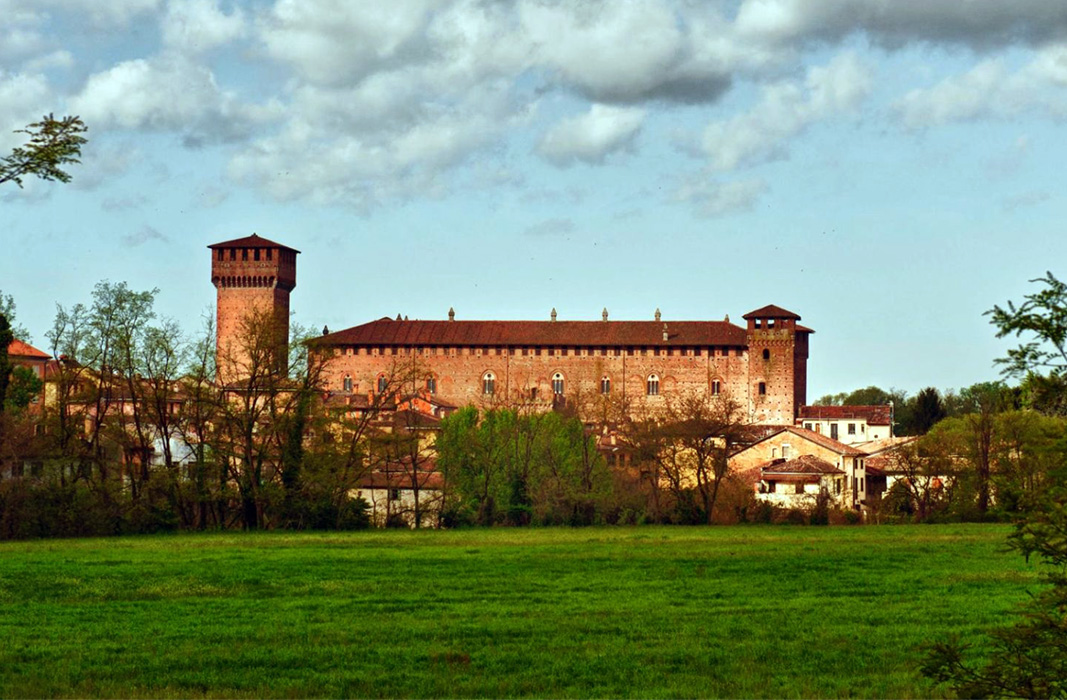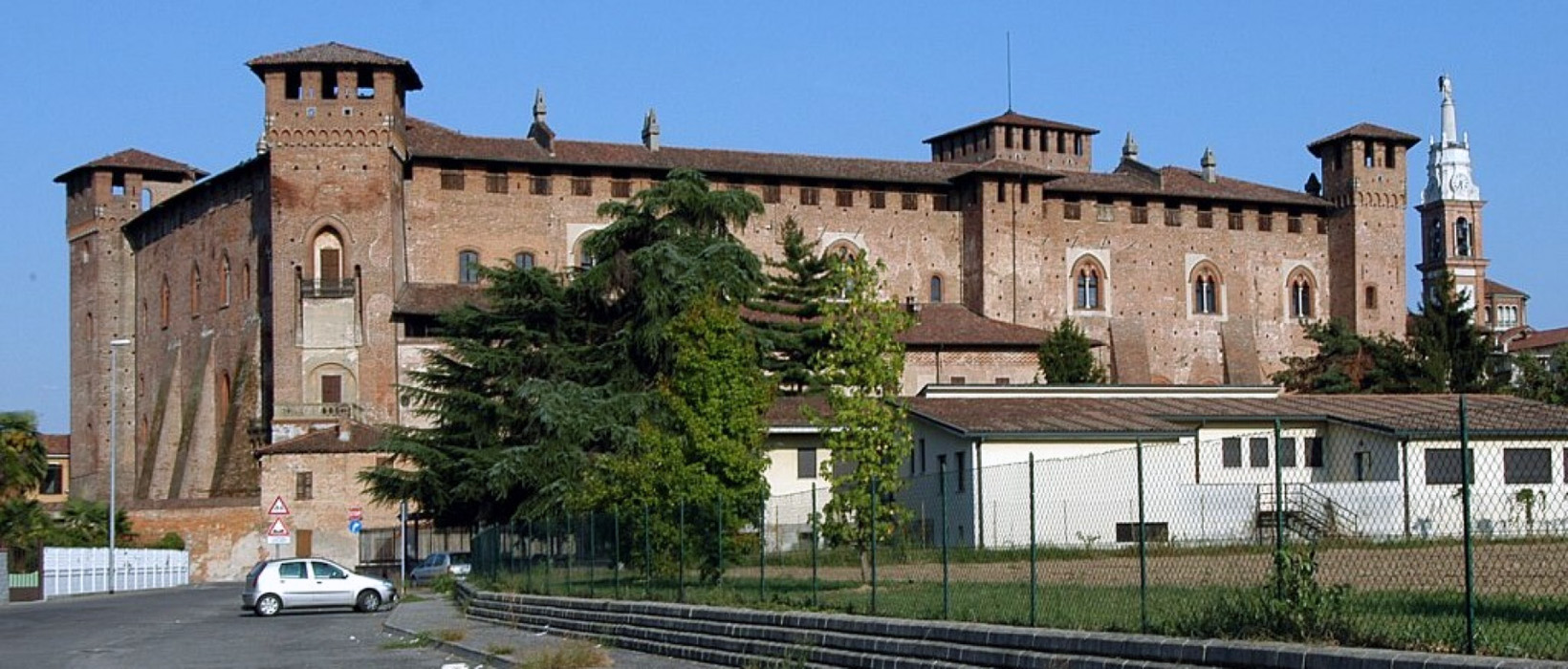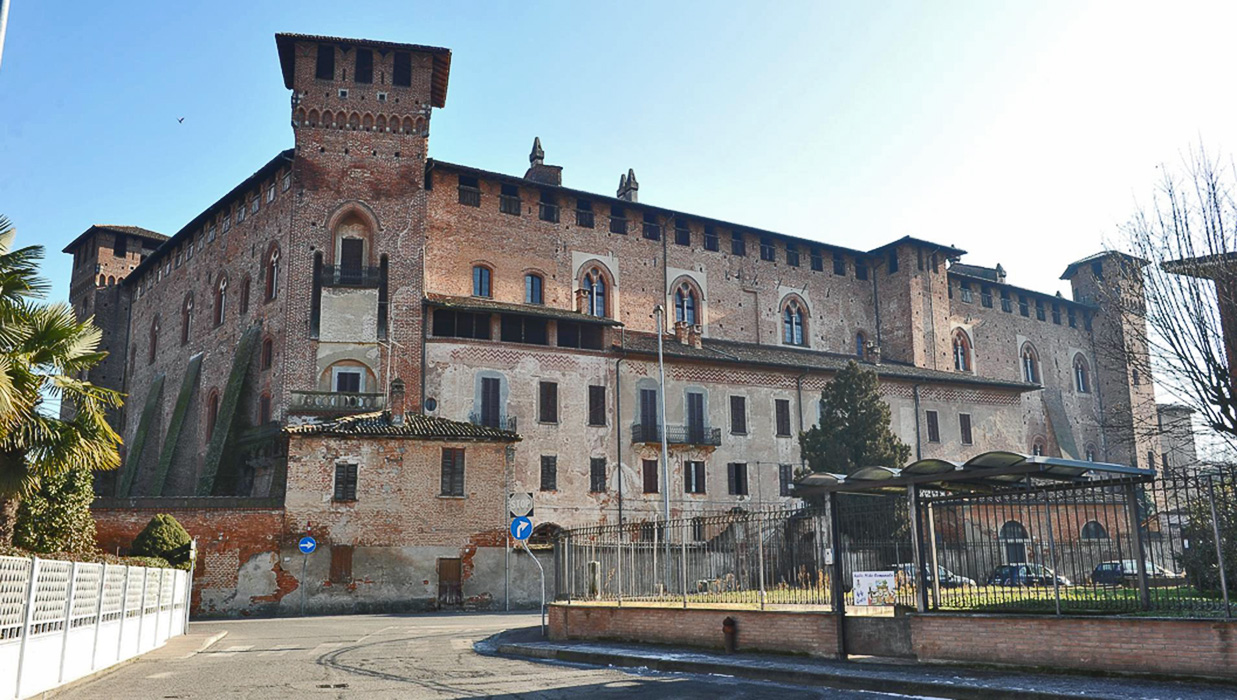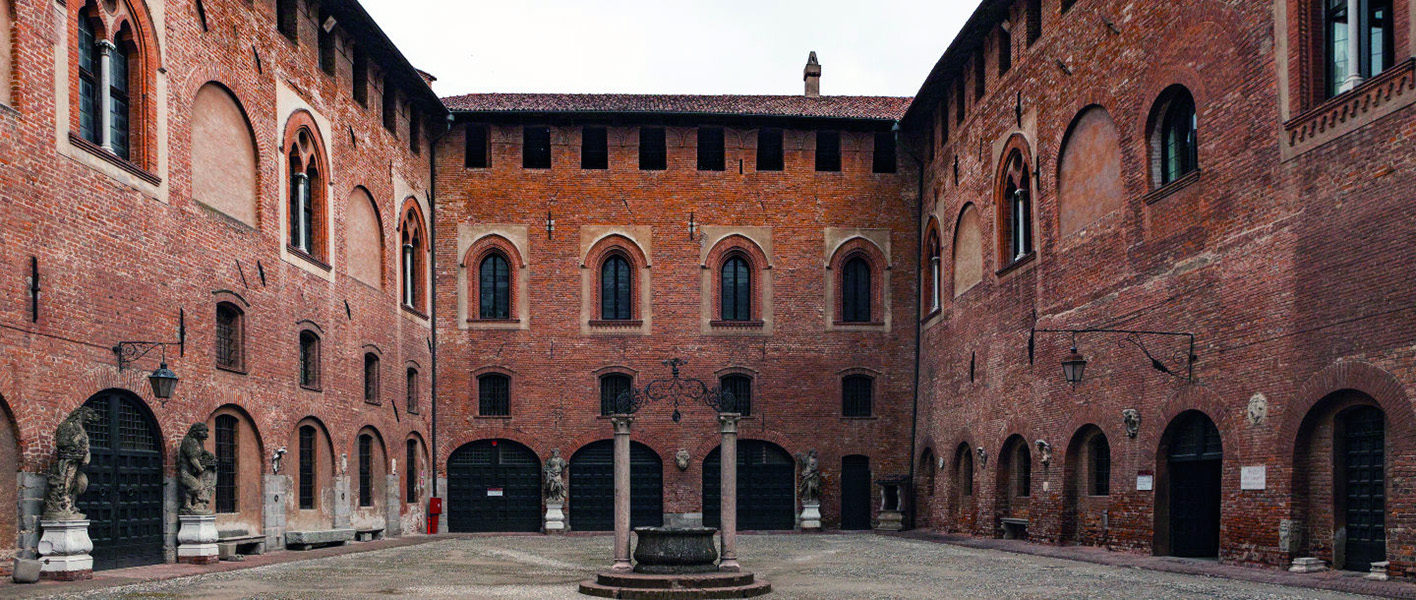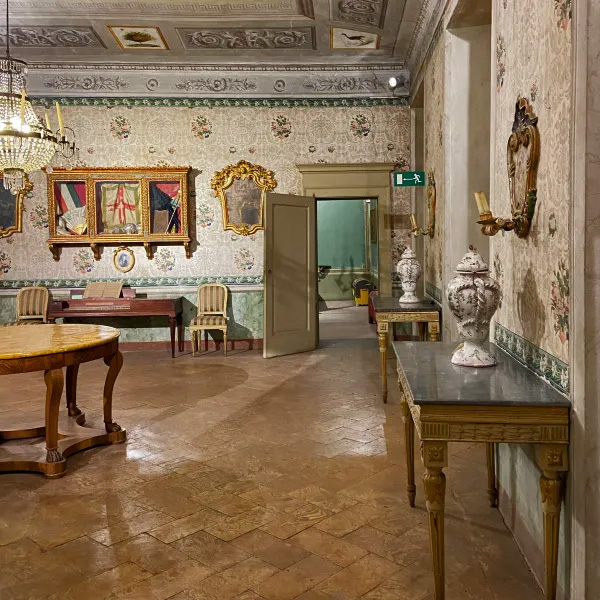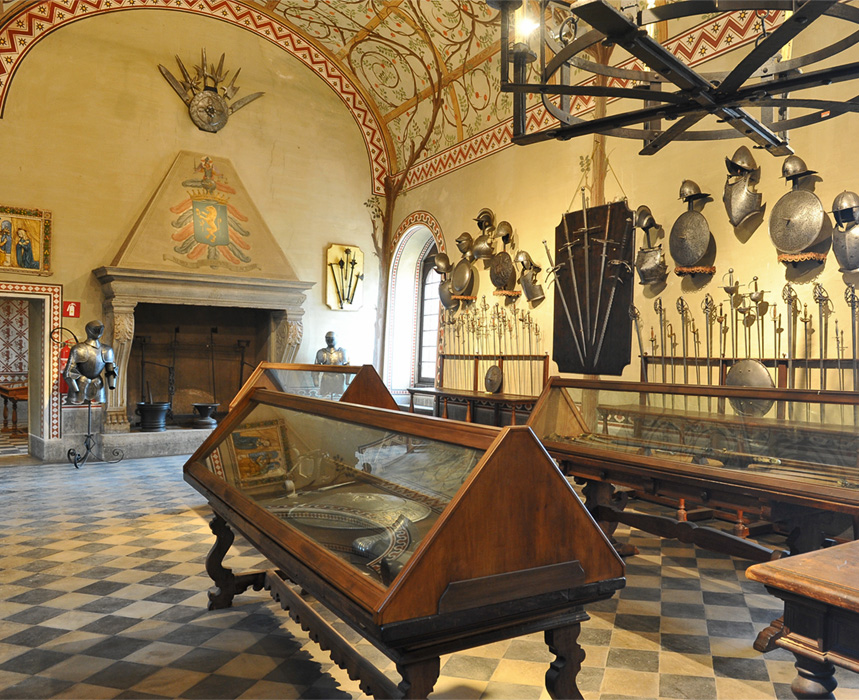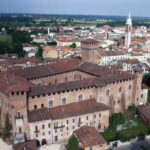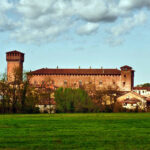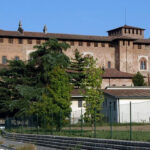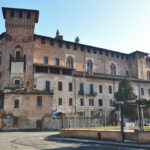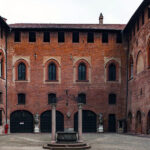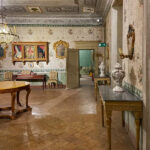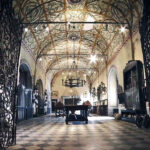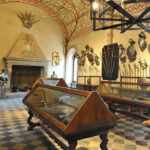Sant’Angelo Lodigiano – The Bolognini Castle
>>Milan Golf District
>>Emilia Golf District
The Castle of Sant’Angelo Lodigiano, a fortress with an irregular quadrangular base, is a typical example of Lombard military architecture, erected by the Milanese. According to the Milanese chronicler Galvano Fiamma, its construction was completed on October 8, 1224. The Lords of Milan became owners of the Castle: first, the Della Torre, and then the Visconti. Around 1370, Bernabò Visconti donated the fortress and the lands of Sant’Angelo to his wife, Regina della Scala, daughter of Mastino II, lord of Verona. In 1383, she erected the master tower on the southeast corner and opened numerous Gothic windows in the Castle, at a cost of 100,000 gold florins. The Castle was then conquered by Francesco Sforza on April 14, 1452, to recover the lands belonging to the Visconti. Only ten days later, on April 24 of the same year, Sforza donated the Castle and the lands of Sant’Angelo to a captain of the military, Michele Matteo, also known as the Bolognino, for favors received. On this occasion, he conferred upon him the title of Count with a new name, Michele Matteo Attendolo (Sforza’s name) Bolognini. Due to the different historical, political, and military events, the manor was occupied by French, Swiss, Austrian, and Spanish soldiers. Towards the end of the 1700s, it was occupied by French soldiers who came to the aid of Napoleon Bonaparte, who descended to Lodi in the famous battle on the Adda river bridge against the Austrians. On this occasion, it suffered severe devastation, was looted, and reduced to poor condition. Until 1866, it was occupied by a military garrison, remaining always owned by the Attendolo Bolognini family, divided among the various family members. The last count in the direct line, Gian Giacomo Attendolo Bolognini, died in 1865 without leaving male heirs, but had made some restoration work. Towards the end of the 1800s, Count Gian Giacomo Morando Bolognini, son of Clotilde Bolognini and Count Alessandro Morando, inherited the Castle, renovated it, reopened the Gothic windows, restored the tower, and covered the drawbridge. Furthermore, he restored the ground floor rooms, brought in furniture, paintings, and furnishings that he acquired for the occasion or transported from his other properties. However, in 1911, a furious fire devastated the Castle, destroying, among other things, part of the library and the precious family archive. In September of the same year, Count Gian Giacomo resumed work, which finished in the spring of 1912, with the complete restoration of the interiors and exteriors, including the reconstruction of the towers in the corners. He also redid the roofs, channeling rainwater to the center of the courtyard into a splendid Venetian well. The Castle of Sant’Angelo Lodigiano boasts three magnificent museums: the Bolognini Museum, the Bread Museum, and the History of Agriculture Museum.

